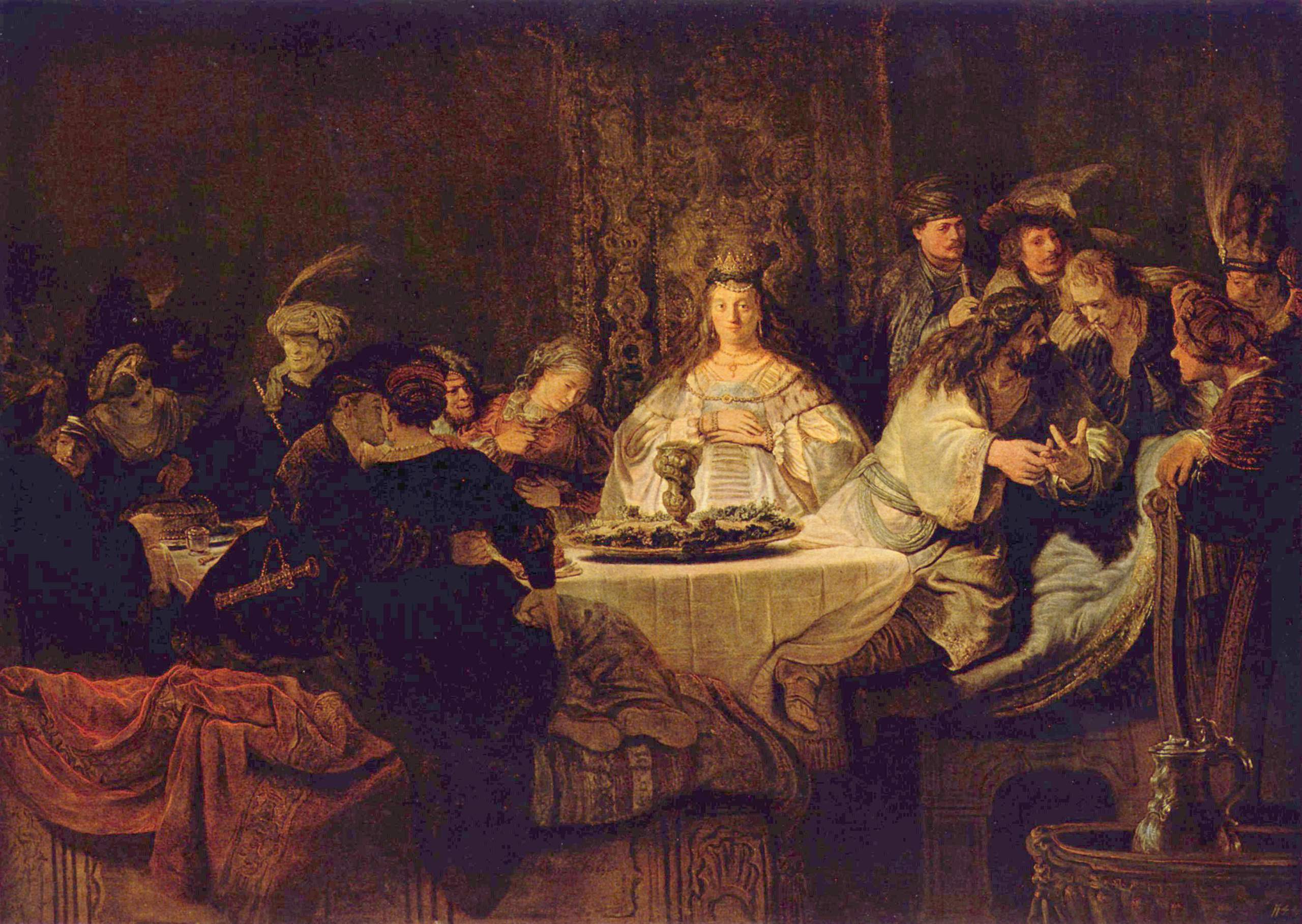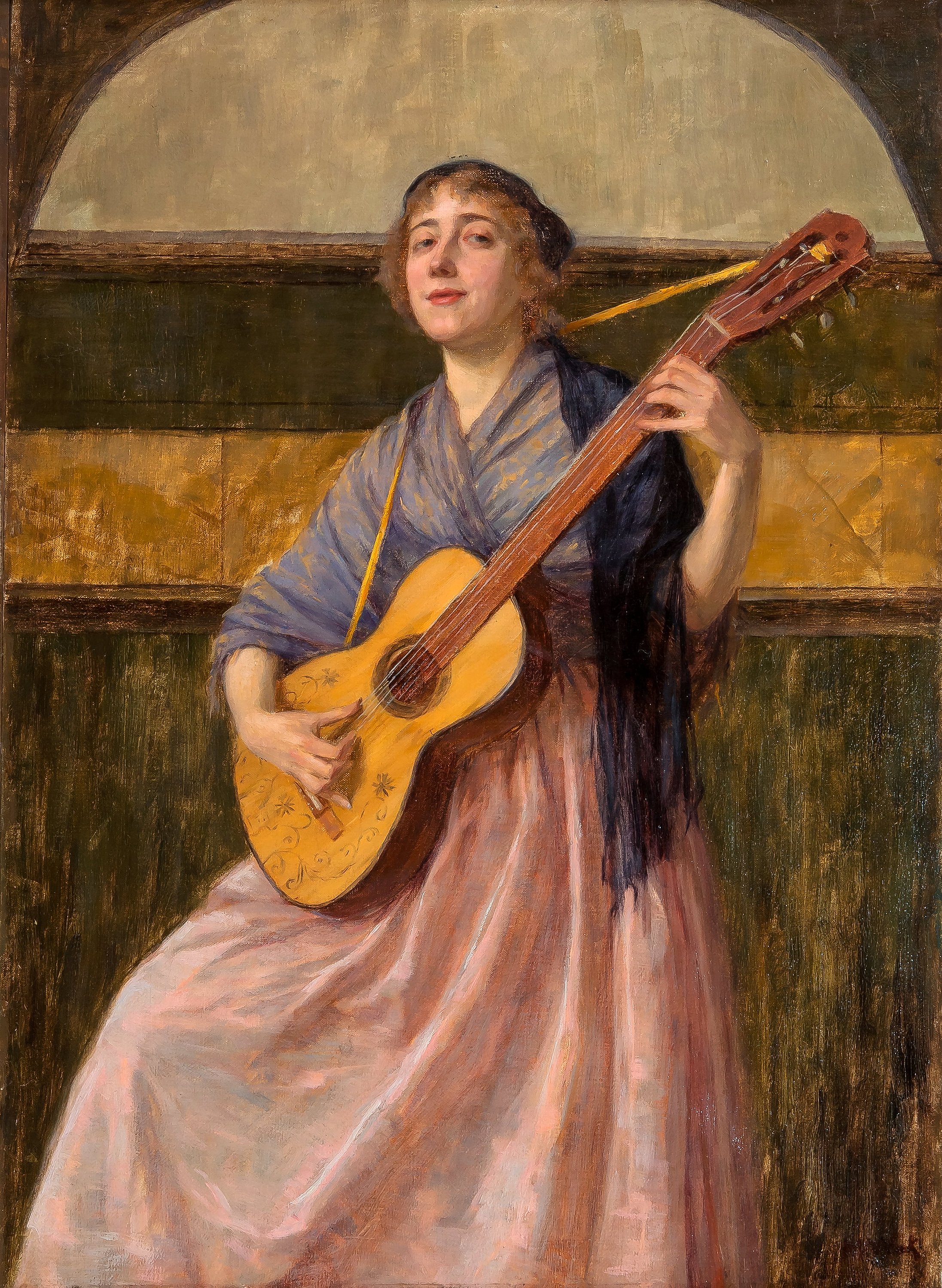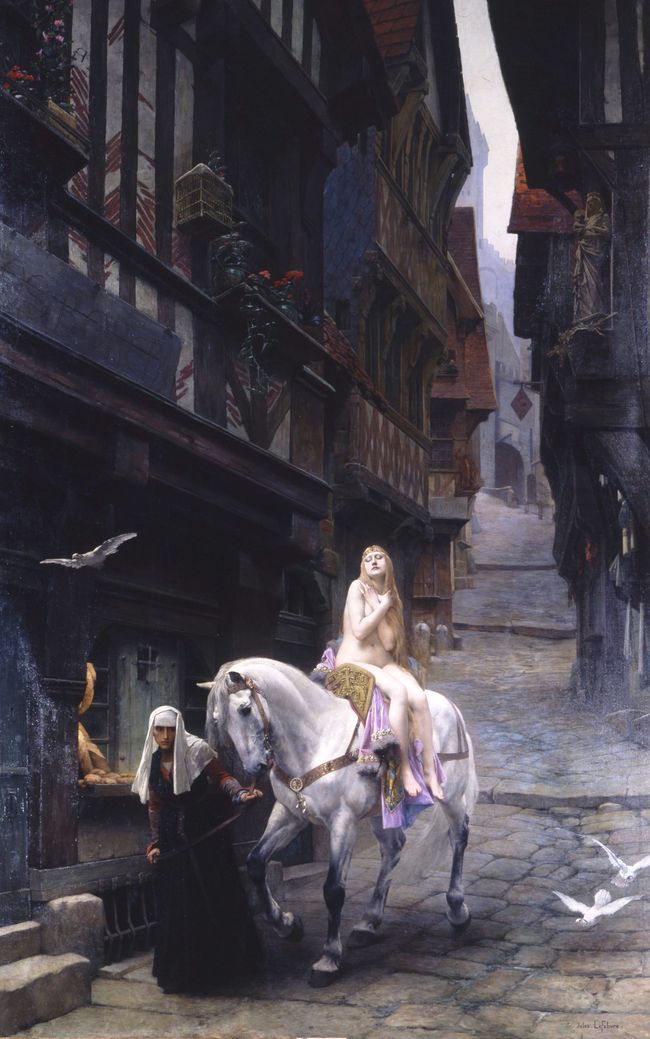|
Adynata
Adynaton (; plural adynata) is a figure of speech in the form of hyperbole taken to such extreme lengths as to insinuate a complete impossibility: I will sooner have a beard grow in the palm of my hand than he shall get one on his cheek. The word derives from the Ancient Greek, Greek ἀδύνατον (''adunaton''), neuter of ἀδύνατος (''adunatos''), "unable, impossible" (''a-'', "without" + ''dynasthai'', "to be possible or powerful"). Classical and medieval usage Adynaton was a widespread literary and rhetorical device during the Classical antiquity, Classical Period. In the Eclogue of Plutarch, there is a long list of proverbs and the first section is titled ΠΕΡΙ ΤΩΝ ΑΔΥΝΑΤΩΝ, consisting of proverbs that are built on adynaton. The adynaton form was often used for vows and covenants, such as in the 16th Epodes of Horace, Epode of Horace, 25-34. Its plural form (''adynata'') was translated in Latin as ''impossibilia''. A frequent usage was to refer to ... [...More Info...] [...Related Items...] OR: [Wikipedia] [Google] [Baidu] |
Lexico
Lexico was a dictionary website that provided a collection of English and Spanish dictionaries produced by Oxford University Press (OUP), the publishing house of the University of Oxford. While the dictionary content on Lexico came from OUP, this website was operated by Dictionary.com, whose eponymous website hosts dictionaries by other publishers such as Random House. The website was closed and redirected to Dictionary.com on 26 August 2022. Before the Lexico site was launched, the ''Oxford Dictionary of English'' and ''New Oxford American Dictionary'' were hosted by OUP's own website Oxford Dictionaries Online (ODO), later known as Oxford Living Dictionaries. The dictionaries' definitions have also appeared in Google Dictionary, Google definition search and the Dictionary (software), Dictionary application on macOS, among others, licensed through the Oxford Dictionaries application programming interface, API. History In the 2000s, OUP allowed access to content of the ''Compac ... [...More Info...] [...Related Items...] OR: [Wikipedia] [Google] [Baidu] |
The Sand Reckoner
''The Sand Reckoner'' ( el, Ψαμμίτης, ''Psammites'') is a work by Archimedes, an Ancient Greek mathematician of the 3rd century BC, in which he set out to determine an upper bound for the number of grains of sand that fit into the universe. In order to do this, he had to estimate the size of the universe according to the contemporary model, and invent a way to talk about extremely large numbers. The work, also known in Latin as ''Archimedis Syracusani Arenarius & Dimensio Circuli'', which is about eight pages long in translation, is addressed to the Syracusan king Gelo II (son of Hiero II), and is probably the most accessible work of Archimedes; in some sense, it is the first research-expository paper.Archimedes, The Sand Reckoner 511 R U, by Ilan Vardi accessed 28-II-2007. [...More Info...] [...Related Items...] OR: [Wikipedia] [Google] [Baidu] |
Toronto Maple Leafs
The Toronto Maple Leafs (officially the Toronto Maple Leaf Hockey Club and often referred to as the Leafs) are a professional ice hockey team based in Toronto. They compete in the National Hockey League (NHL) as a member of the Atlantic Division (NHL), Atlantic Division in the Eastern Conference (NHL), Eastern Conference. The club is owned by Maple Leaf Sports & Entertainment, a company that owns several professional sports teams in the city. The Maple Leafs' broadcasting rights are split between BCE Inc. and Rogers Communications. For their first 14 seasons, the club played their home games at the Mutual Street Arena, before moving to Maple Leaf Gardens in 1931. The Maple Leafs moved to their present home, Scotiabank Arena (originally named Air Canada Centre), in February 1999. The club was founded in 1917, operating simply as Toronto and known then as the Toronto Arenas. Under new ownership, the club was renamed the Toronto St. Patricks in 1919. In 1927, the club was purcha ... [...More Info...] [...Related Items...] OR: [Wikipedia] [Google] [Baidu] |
Canadian English
Canadian English (CanE, CE, en-CA) encompasses the varieties of English native to Canada. According to the 2016 census, English was the first language of 19.4 million Canadians or 58.1% of the total population; the remainder spoke French (20.8%) or other languages (21.1%). In Quebec, 7.5% of the population are anglophone, as most of Quebec's residents are native speakers of Quebec French. Phonologically, Canadian and American English are classified together as North American English, emphasizing the fact that most cannot distinguish the typical accents of the two countries by sound alone. While Canadian English tends to be closer to American English in most regards,Labov, p. 222. it does possess elements from British English and some uniquely Canadian characteristics.Dollinger, Stefan (2008). "New-Dialect Formation in Canada". Amsterdam: Benjamins, . p. 25. The precise influence of American English, British English and other sources on Canadian English varieties has be ... [...More Info...] [...Related Items...] OR: [Wikipedia] [Google] [Baidu] |
Clogs
Clogs are a type of footwear made in part or completely from wood. Used in many parts of the world, their forms can vary by culture, but often remained unchanged for centuries within a culture. Traditional clogs remain in use as protective footwear in agriculture and in some factories and mines. Although they are sometimes negatively associated with cheap and folkloric footwear of farmers and the working class, some types are considered fashion wear today, such as Swedish träskor or Japanese geta. Clogs are also used in several different styles of dance, where an important feature is the sound they produce against the floor. Clog dancing is one of the fundamental roots of tap dancing, but with tap shoes the taps are free to click against each other and produce a different sound from clogs. Types The Oxford English Dictionary defines a clog as a "thick piece of wood", and later as a "wooden soled overshoe" and a "shoe with a thick wooden sole". Welsh traditional ... [...More Info...] [...Related Items...] OR: [Wikipedia] [Google] [Baidu] |
Bulgarian Language
Bulgarian (, ; bg, label=none, български, bălgarski, ) is an Eastern South Slavic language spoken in Southeastern Europe, primarily in Bulgaria. It is the language of the Bulgarians. Along with the closely related Macedonian language (collectively forming the East South Slavic languages), it is a member of the Balkan sprachbund and South Slavic dialect continuum of the Indo-European language family. The two languages have several characteristics that set them apart from all other Slavic languages, including the elimination of case declension, the development of a suffixed definite article, and the lack of a verb infinitive. They retain and have further developed the Proto-Slavic verb system (albeit analytically). One such major development is the innovation of evidential verb forms to encode for the source of information: witnessed, inferred, or reported. It is the official language of Bulgaria, and since 2007 has been among the official languages of ... [...More Info...] [...Related Items...] OR: [Wikipedia] [Google] [Baidu] |
The Spinning-Woman By The Spring
The Spinning-Woman by the Spring or The Kind and the Unkind Girls is a widespread, traditional folk tale, known throughout Europe and in certain regions of Asia, including Indonesia. The tale is cataloged as AT 480 in the international Folktale catalog. Synopsis Two stepsisters are, one after another, sent out to serve in the house of a witch where they are assigned what appear to be difficult or impossible tasks. For instance, they are tasked to carry water with a sieve. The kind girl, however, obeys requests from grateful animals and learns from the birds' song that she must line the sieve with clay to complete her task. Other chores they are assigned include washing black wool white, and gathering flowers at midwinter. As payment for her household work she can choose one of three caskets, an attractive red, a common yellow or an ugly blue casket. Again, she receives advice from the animals and makes the modest choice and becomes richly rewarded. Even though the unkind gir ... [...More Info...] [...Related Items...] OR: [Wikipedia] [Google] [Baidu] |
Riddle
A riddle is a statement, question or phrase having a double or veiled meaning, put forth as a puzzle to be solved. Riddles are of two types: ''enigmas'', which are problems generally expressed in metaphorical or allegorical language that require ingenuity and careful thinking for their solution, and ''conundra'', which are questions relying for their effects on punning in either the question or the answer. Archer Taylor says that "we can probably say that riddling is a universal art" and cites riddles from hundreds of different cultures including Finnish, Hungarian, American Indian, Chinese, Russian, Dutch and Filipino sources amongst many others. Many riddles and riddle-themes are internationally widespread. In the assessment of Elli Köngäs-Maranda (originally writing about Malaitian riddles, but with an insight that has been taken up more widely), whereas myths serve to encode and establish social norms, "riddles make a point of playing with conceptual boundaries and cr ... [...More Info...] [...Related Items...] OR: [Wikipedia] [Google] [Baidu] |
Ballad
A ballad is a form of verse, often a narrative set to music. Ballads derive from the medieval French ''chanson balladée'' or '' ballade'', which were originally "dance songs". Ballads were particularly characteristic of the popular poetry and song of Britain and Ireland from the Late Middle Ages until the 19th century. They were widely used across Europe, and later in Australia, North Africa, North America and South America. Ballads are often 13 lines with an ABABBCBC form, consisting of couplets (two lines) of rhymed verse, each of 14 syllables. Another common form is ABAB or ABCB repeated, in alternating eight and six syllable lines. Many ballads were written and sold as single sheet broadsides. The form was often used by poets and composers from the 18th century onwards to produce lyrical ballads. In the later 19th century, the term took on the meaning of a slow form of popular love song and is often used for any love song, particularly the sentimental ballad of pop or ... [...More Info...] [...Related Items...] OR: [Wikipedia] [Google] [Baidu] |
Folklore
Folklore is shared by a particular group of people; it encompasses the traditions common to that culture, subculture or group. This includes oral traditions such as Narrative, tales, legends, proverbs and jokes. They include material culture, ranging from traditional building styles common to the group. Folklore also includes Tradition, customary lore, taking actions for folk beliefs, the forms and rituals of celebrations such as Christmas and weddings, folk dances and Rite of passage, initiation rites. Each one of these, either singly or in combination, is considered a Cultural artifact, folklore artifact or Cultural expressions, traditional cultural expression. Just as essential as the form, folklore also encompasses the transmission of these artifacts from one region to another or from one generation to the next. Folklore is not something one can typically gain in a formal school curriculum or study in the fine arts. Instead, these traditions are passed along informally from o ... [...More Info...] [...Related Items...] OR: [Wikipedia] [Google] [Baidu] |
Legend
A legend is a genre of folklore that consists of a narrative featuring human actions, believed or perceived, both by teller and listeners, to have taken place in human history. Narratives in this genre may demonstrate human values, and possess certain qualities that give the tale verisimilitude. Legend, for its active and passive participants may include miracles. Legends may be transformed over time to keep them fresh and vital. Many legends operate within the realm of uncertainty, never being entirely believed by the participants, but also never being resolutely doubted. Legends are sometimes distinguished from myth Myth is a folklore genre consisting of Narrative, narratives that play a fundamental role in a society, such as foundational tales or Origin myth, origin myths. Since "myth" is widely used to imply that a story is not Objectivity (philosophy), ...s in that they concern human beings as the main characters rather than gods, and sometimes in that they have s ... [...More Info...] [...Related Items...] OR: [Wikipedia] [Google] [Baidu] |
Brand (play)
''Brand'' is a play by the Norwegian playwright Henrik Ibsen. It is a verse tragedy, written in 1865 and first performed in Stockholm, Sweden on 24 March 1867. Brand is a priest who accepts the consequence of his choices, and is deeply bound to doing the "right thing". He believes primarily in the will of man, and lives by the belief "all or nothing". To make compromises is therefore difficult, or questionable. Brand's beliefs render him lonely, because those around him, when put to the test, generally cannot or will not follow his example. He is a young idealist whose main purpose is to save the world, or at least people's souls, but his judgment of others are harsh and unfair. The word ''brand'' means "fire" in Danish, Norwegian and Swedish. Plot First act At the beginning of the play, we find Brand in the mountains confronting different kinds of people: a farmer traveling with his son, who does not dare to brave a dangerous glacier on behalf of his dying daughter; Ei ... [...More Info...] [...Related Items...] OR: [Wikipedia] [Google] [Baidu] |







